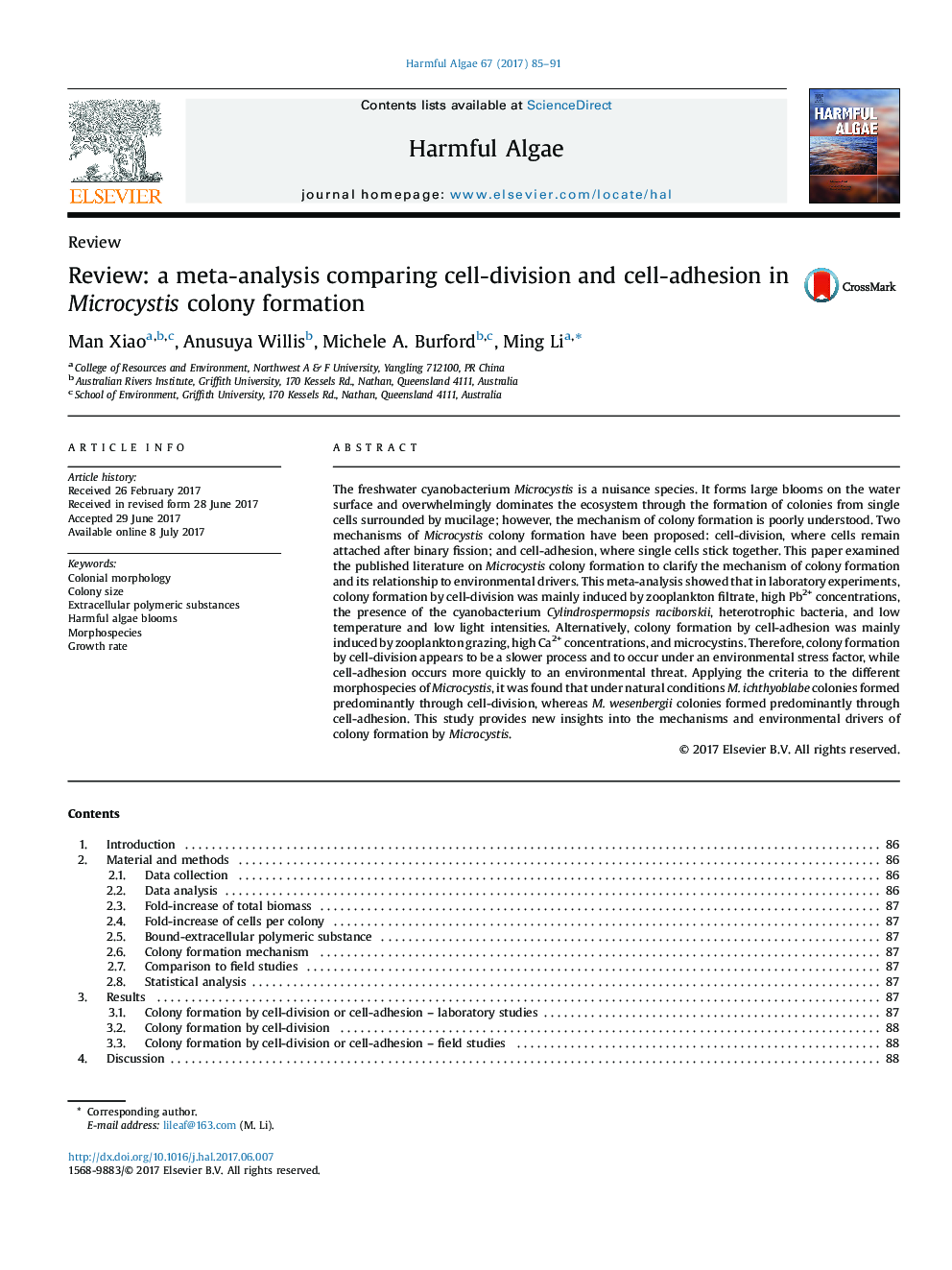| کد مقاله | کد نشریه | سال انتشار | مقاله انگلیسی | نسخه تمام متن |
|---|---|---|---|---|
| 5765717 | 1626905 | 2017 | 7 صفحه PDF | دانلود رایگان |

- Cell-division and -adhesion proposed as mechanisms of Microcystis colony formation.
- Cell-adhesion is defined as the increase of cells per colony > biomass increase.
- Cell-division is defined as the increase of cells per colony â¤Â biomass increase.
- M. ichthyoblabe colonies form by cell-division and M. wesenbergii by cell-adhesion.
The freshwater cyanobacterium Microcystis is a nuisance species. It forms large blooms on the water surface and overwhelmingly dominates the ecosystem through the formation of colonies from single cells surrounded by mucilage; however, the mechanism of colony formation is poorly understood. Two mechanisms of Microcystis colony formation have been proposed: cell-division, where cells remain attached after binary fission; and cell-adhesion, where single cells stick together. This paper examined the published literature on Microcystis colony formation to clarify the mechanism of colony formation and its relationship to environmental drivers. This meta-analysis showed that in laboratory experiments, colony formation by cell-division was mainly induced by zooplankton filtrate, high Pb2+ concentrations, the presence of the cyanobacterium Cylindrospermopsis raciborskii, heterotrophic bacteria, and low temperature and low light intensities. Alternatively, colony formation by cell-adhesion was mainly induced by zooplankton grazing, high Ca2+ concentrations, and microcystins. Therefore, colony formation by cell-division appears to be a slower process and to occur under an environmental stress factor, while cell-adhesion occurs more quickly to an environmental threat. Applying the criteria to the different morphospecies of Microcystis, it was found that under natural conditions M. ichthyoblabe colonies formed predominantly through cell-division, whereas M. wesenbergii colonies formed predominantly through cell-adhesion. This study provides new insights into the mechanisms and environmental drivers of colony formation by Microcystis.
Journal: Harmful Algae - Volume 67, July 2017, Pages 85-91